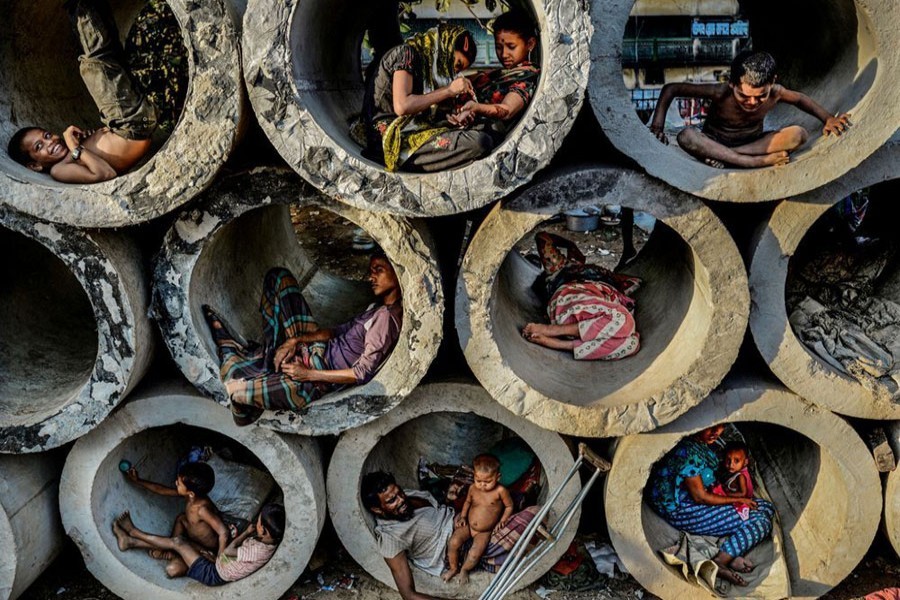Lifting of the ultra-poor in a sustainable way from grinding poverty has long been at the centre of development discourses. One school tends to reckon that mere asset transfer may do more harm than good while others cling to the old thought.
By sustainable uplift, at the moment, we will refer to a situation when the poor survive well even after interventions are withdrawn. Here is a case study:
Beauty Begum (30) is the daughter of a former day labourer and a maid. She has been living with her parents permanently for some years. She was married off early, at the age of 15, when she was a student of Class IX. The bridegroom, a vegetable vendor, was a heroin addict. Beauty used to be beaten off and on, even during her pregnancy periods, by her husband. Thus, doomed to darkness, one day she decided on her own to leave her husband.
For parents struggling from hand to mouth, it was not a welcome comeback but the daughter could not be driven out on the pretext of household poverty. In a very small room, she used to reside along with her two sons. With social stigma lurking, Beauty worked in agricultural fields to pluck crops like onions, threshing paddy after harvest, cleaning and cooking in other households as a maid.
At the peak of her poverty, she came to know that BRAC's Targeting Ultra Poor (TUP) programme could possibly provide her with a clue, if not a cure, to overcome socio-economic complexities awaiting her. In 2010, along with many in and around, she qualified for a grant that comprised of: (a) an asset like a cow that cost Tk.8,500; (b) 10 poultry birds worth Tk.2,000, and (c) a consumption allowance for 32 weeks worth Tk. 6,500.
In 2017, seven years down the road, this writer decided to collect information on Beauty's socio-economic conditions with a hypothesis in mind. Of course, this hypothesis has been hovering around development discourse for pretty a long time. It is that asset transfer from outside sources is necessary but not sufficient for a sustainable graduation of the ultra-poor.
We can pick up a comparative picture. Taramon Begum (66) and Beauty (30) of Mirpur village under Mohonpur, Poba, Rajshahi, accessed TUP grant at the same time. For the last seven years after receipt of the grant, Taramon still groans under poverty. Still she depends on others for food. Three main factors could be adduced to her failure to graduation: (a) sale of assets for meeting expenses of her daughter's dowry; (b) illiteracy; (c) age factor foiling any attempt to take up challenges; (d) lack of enterprising attitude; and (e) lack of hope to rise above poverty.
On the other hand, Beauty gained a lot of grounds in her march to combat poverty. This contrasting scenario should serve some take-home lessons in the programmes for poverty alleviation. After seven years of graduation, Beauty Begum owns a cow, and a calf worth Tk.40,000. The cow is now pregnant. Beauty, like all members of TUP programme, got help only for two years. What distinguishes her from Taramon is that she did not dispose of assets while in poverty.
Six months after receiving the assets, Beauty joined a jute mill as a daily worker to earn Tk.200 per day. In her view, 'as it would take some time to get income from livestock or poultry birds, I joined the work to meet seasonal income shocks'.
Beauty has already sold three livestock worth Tk.1,24,000 and invested the money in two ventures - (a) buying an auto van and renting it out to her father at the rate of Tk.200 a day, and (b) purchasing a piece of land her father was selling to arrange his second daughter's marriage. The six-decimal plot is used as a betel leaf garden (panerboroj). She leased out the land for five years at Tk.15,000.
Beauty's small room has now a fridge, and a costly almirah, among other things. She has also bought a rice cooker to help her mother cook rice quickly. She now has Tk.100,000 as savings. She presently spends Tk.4,000-5,000 per month for education of two sons. Three of them in the household can now afford to consume eggs, meat, milk and fruits regularly - which were never done before.
We observe three major impacts of the programme on Beauty Begum's life: (a) at structural level - endowments of assets with increase in diversity; (b) at agency level, she has been more empowered than before; in fact most of the decisions come from herself unless she intends to share with others (father and mother), and (c) at relations level, she has high mobility inside and outside her village. More importantly, she now gets invitations and words of praise from those who had once looked down upon her. The most important observation is that the programme has enabled her to dream a bright future.
In conclusion, we observe: (a) age matters and relatively younger ones perform better; (b) education up to secondary level possibly helps decision making and choices; (c) supplementary income generation helps to maximise the gains from TUP package and (d) entrepreneurial zeal or capacity matters most, and finally, (e) the endowments must match the windows of opportunities in and around.
The writer is a former Professor of Economics at Jahangirnagar University.


